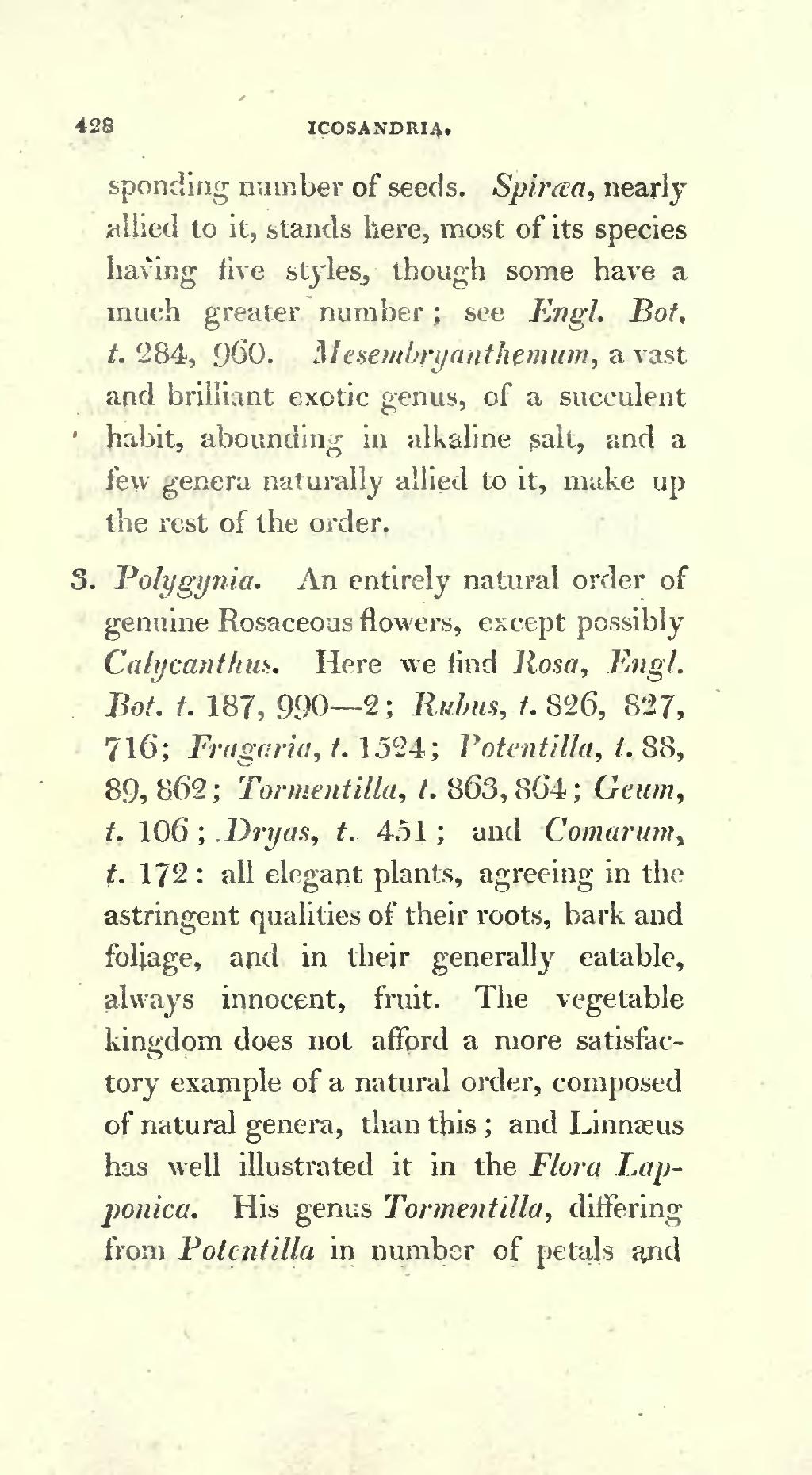sponding number of seeds. Spiræa, nearly allied to it, stands here, most of its species having five styles, though some have a much greater number; see Engl. Bot. t. 284, 960. Mesembryanthemum, a vast and brilliant exotic genus, of a succulent habit, abounding in alkaline salt, and a few genera naturally allied to it, make up the rest of the order.
3. Polygynia. An entirely natural order of genuine Rosaceous flowers, except possibly Calycanthus. Here we find Rosa, Engl. Bot. t. 187, 990—2; Rubus, t. 826, 827, 716; Fragaria, t. 1524; Potentilla, t. 88, 89, 862; Tormentilla, t. 863, 864; Geum, t. 106; Dryas, t. 451; and Comarum, t. 172: all elegant plants, agreeing in the astringent qualities of their roots, bark and foliage, and in their generally eatable, always innocent, fruit. The vegetable kingdom does not afford a more satisfactory example of a natural order, composed of natural genera, than this; and Linnæus has well illustrated it in the Flora Lapponica. His genus Tormentilla, differing from Potentilla in number of petals and
